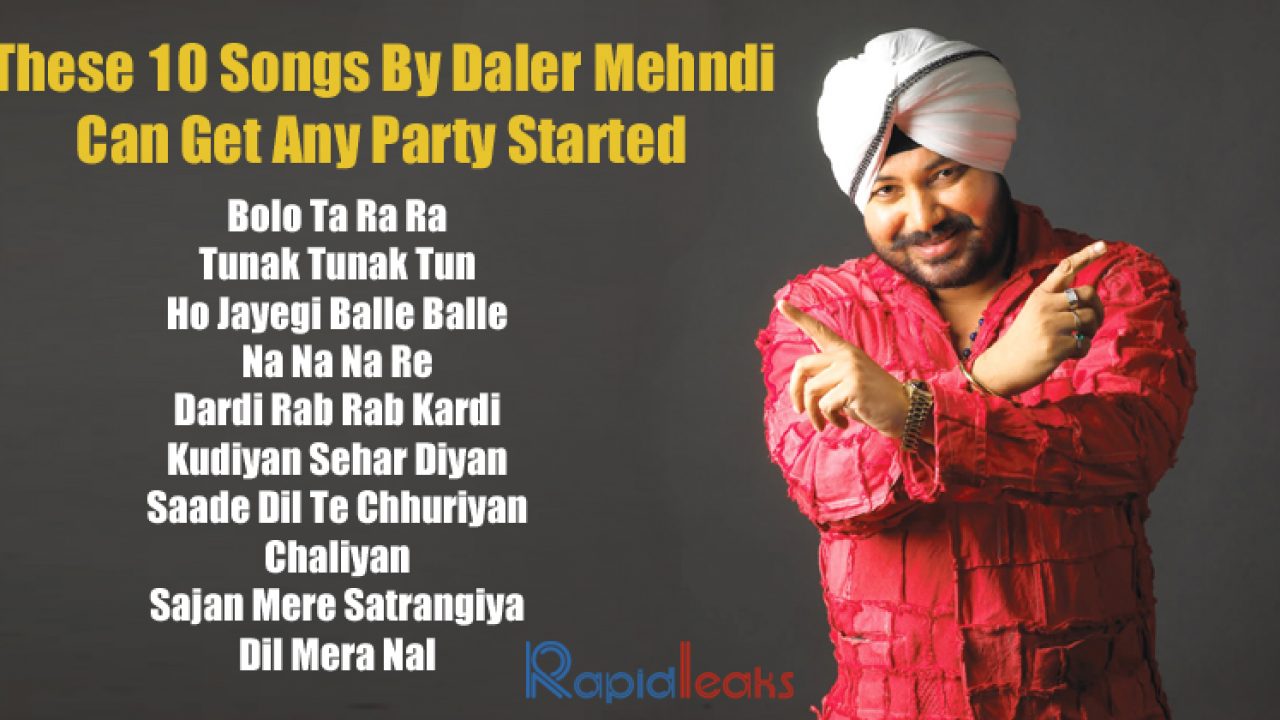
How does it feel to be so wrong How does it feel to hear hot tracks like 'Dum Ba Dum' or 'Bhootiye' and be taken back to mystical Dalerland, where the sky is an oceanic blue and the grass is an. ^ "Ultratop.be - Daler Mehndi - Tunak Tunak Tun". 'Its 16 years since Bolo Ta Ra Ra and 13 years since Tunak Tunak Tun, the man is washed up' you may have said.^ "Medal Of Honor: Allied Assault: Spearhead Easter Egg - Make the Player Models Dance".^ "Daler Mehndi Tunaks his way into World of Warcraft".^ "Better luck next time: Daler Mehndi".^ Daler Mehndi - Tunak Tunak Tun Video on YouTube.^ "Official exchange rate (LCU per US$, period average)".Ova kele lou kuluku, leai ma se moi o ga kala hahaha. With sum of Rs 2.5 Crores Daler was supposed to make Music Video. KULUKU, Leai ma se moi - LOVE.KING (New Samoan Reggae Song). ^ "Better luck next time: Daler Mehndi". Tunak Tunak Tun or simply Tunak, is a Bhangra/Indi-pop song by Indian Punjabi artist Daler Mehndi, released in 1998.Bhangra Moves: From Ludhiana to London and Beyond. "How Daler Mehndi's "Tunak Tunak Tun" Became A Global Viral Phenomenon". ^ a b c d "Bhangra Beat Transforms Indipop Scene".Archived from the original on 14 August 2011. Chart performance Chart (1998-2016)īillboard World Digital Songs Sales Chart This dance is also included as an easter egg in the video game Medal of Honor: Allied Assault Spearhead. In response, the video game company Blizzard Entertainment incorporated the "Tunak Tunak Tun" dance as a character animation in their multiplayer role-playing game World of Warcraft in 2007. In the 2000s, "Tunak Tunak Tun" found greater international popularity on the internet as a viral video. In China, it attained popularity for its lyrics, which sound like nonsensical words, gaining the song the Chinese name, "我在东北玩泥巴" ("I'm playing clay in Northeastern China"). International popular culture īy 1999, the song found an international cult following, particularly among the South Asian diaspora in countries such as the United Kingdom and United States, as well as in Far-Eastern markets such as Japan. Despite this, the song became an incredible commercial success in 1998, becoming the biggest Indi-pop hit at the time. The song and the music video received a negative review from Rashtriya Sahara magazine in 1998. The men later fuse by first reverting to their comet states and then merging to form a seemingly more powerful being, who is predominantly clad in garb of gold and emerald.Īs of November 1, 2021, the music video has received over 183 million views on the Sony Music India channel at YouTube. Each of them take turns singing, dancing and pointing at each other as though they are discussing something. The men start off as comets made of water, earth, air, and fire before transforming into clothed humans. The earth Mehndi wears red/maroon, the fire Mehndi wears orange, the wind Mehndi wears brown, and the water Mehndi wears green.

The music video follows a simple plot about four men, all played by Mehndi, who represent the four classical elements and dress in lavish Indian clothing.

The music video was produced on an unprecedented budget of ₹25 million ( $610,000), equivalent to ₹96 million ( $1.36 million) adjusted for inflation.

The music video was the first made in India using Bluescreen technology, which allowed the singer to superimpose his image over various computer-generated backgrounds including desert and mountain landscapes as well as St. The singer responded by creating a video that featured only himself. Mehndi's music was often criticized for only being popular due to his videos which featured beautiful, dancing women. The lyrics also refer to the ektara or tuntuna.

Ho Jayegi Balle Balle followed in 1999.The "Tunak Tunak Tun" lyrics are a reference to the sounds made by a tumbi (also called tumba), a traditional musical instrument from the Punjab region in the northern Indian subcontinent. The record also earned Mehndi the honor of Channel V's Best Male Pop Singer Award, a title he also earned for 1996's Dard Di Rab Rab and 1997's Ho Jayegi Bale Bale appearances in the films Mrityudata and Arjun Pundit further expanded his enormous popularity, and he began playing sell-out performances across the globe. Gradually he turned away from classical music toward pop, however, and in 1995 became a superstar when his debut album Bolo Ta Ra Ra sold over half a million copies within four months of its release on its way to becoming the best-selling non-soundtrack album in Indian chart history.
TUNAK TUNAK TUN TARA RA PROFESSIONAL
After years of intense training, Mehndi mounted his professional career, initially singing ghazaals inspired by the poetry of Qateel Shifai and Firaq Gorakhpuri. Punjabi pop sensation Daler Mehndi was born and raised in Benares, North India he began singing at the age of five, and at 14 left home to study with his uncle, Raahat Ali Khan Saheb, honing not only his vocal skills but also learning the tabla, harmonium and tanpura.


 0 kommentar(er)
0 kommentar(er)
